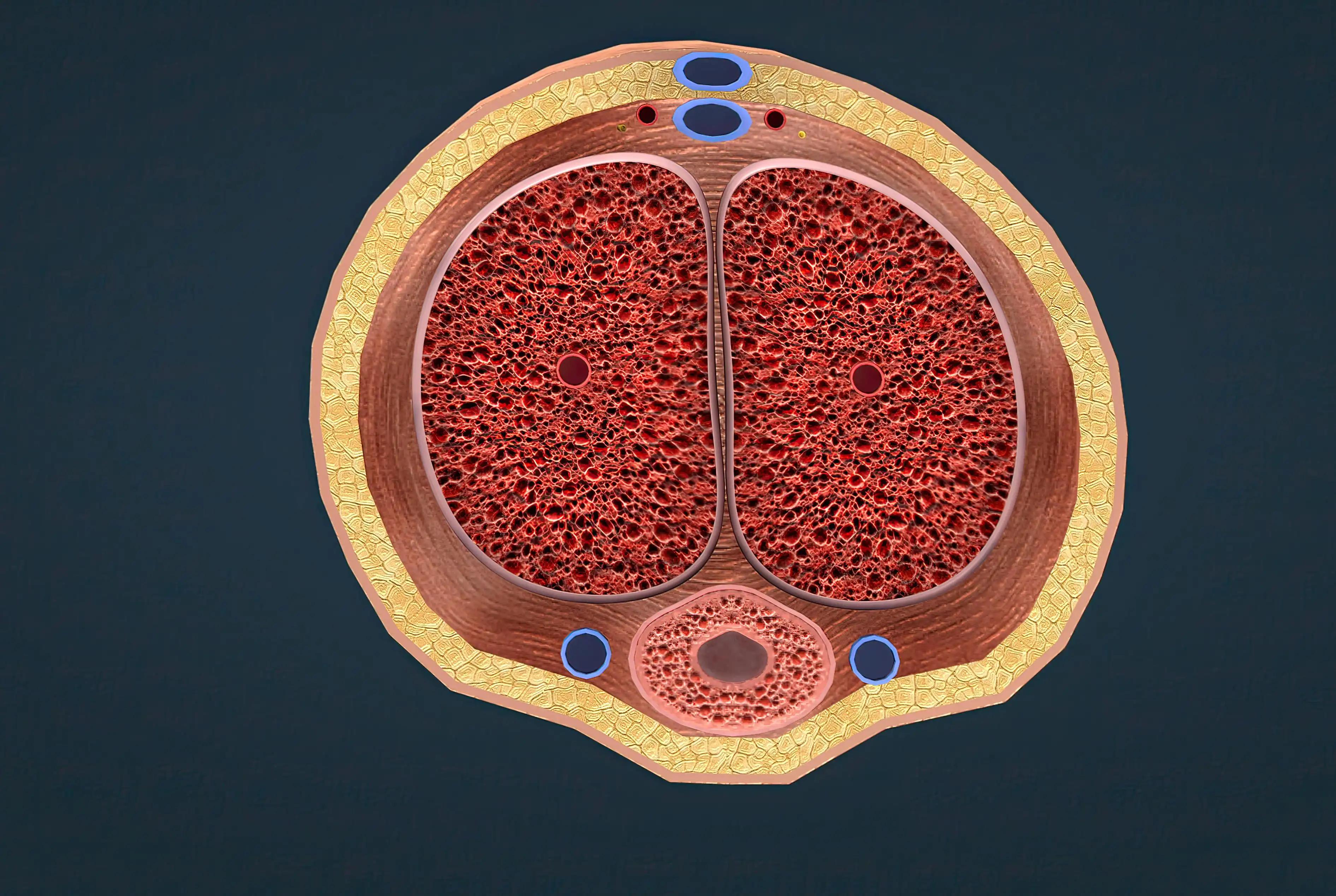KEY TAKEAWAYS
- The EV-103 Cohort K trial was a Phase 1b/2 trial (NCT03288545) that evaluated the efficacy of 1L EV+P or EV alone in cisplatin-ineligible patients with la/mUC.
- EV+P showed a clinically meaningful objective response rate of 64.5% with a manageable safety profile.
- The results showed that EV+P was associated with preserving or improving QOL, functioning, and symptoms. The EORTC QLQ-C30 and BPI-SF compliance rates were ≥84% for both instruments through Week 24.
- The EORTC QLQ-C30 MMRM analyses showed that QOL was maintained through Week 24 for EV+P; functioning and symptom scores remained stable over time, with improvements in emotional functioning, pain, and sleep disturbance vs observed baseline.
- The BPI-SF MMRM analyses demonstrated that EV+P consistently improved worst and average pain, pain interference, and severity from Week 4–24.
Patients with mucinous uveal carcinoma (mUC) who were ineligible for cisplatin were analyzed in the EV-103 Cohort K study, which compared 1L EV+P to EV alone (NCT03288545). The objective response rate for EV+P was clinically significant (64.5%; 95% CI, 52.7-75.1), and the treatment was well tolerated.
Patients with locally advanced or metastatic urothelial carcinoma (la/mUC) who were ineligible for cisplatin were randomly assigned to receive either EV+P or EV alone in an open-label, Phase 1b/2 trial. Patients performed the EORTC QLQ-C30 and BPI-SF at baseline, once every cycle for cycles 1-4, and once every cycle for the rest of the therapy period as exploratory PRO outcomes. The PRO analysis set included only treated patients who completed the baseline survey. Change from baseline to Week 24 was estimated using a mixed effect model for repeated measures (MMRM; least squares [LS] mean, standard error [SE]) that did not account for multiplicity. Predetermined cutoffs were used (EORTC QLQ-C30: 10-point change; BPI-SF: 2-point change) to identify statistically significant outcome shifts.
Around 65 patients were included in the PRO analysis set out of 76 who were given EV+P. At baseline, one hundred percent and ninety-five percent of patients on the EORTC QLQ-C30 and BPI-SF, respectively, had completed the surveys, with adherence rates of 84% and 86%, respectively, through Week 24. Quality of life (QoL) was steady for EV+P through Week 24 in the EORTC QLQ-C30 MMRM analyses, with improvements in emotional functioning, pain, and sleep disruption compared to baseline. Significant pain relief in the EV+P group began at Week 12(-12.64 [3.208] vs. baseline) and persisted until Week 24. (-13.20 [3.406]). During Week 4-24, EV+P exhibited statistically and clinically significant improvements in worst and average pain, pain interference, and pain severity on the BPI-SF MMRM (-2.08 [0.361]).
Comparable completion and compliance rates were reported for the EV alone PRO analysis set (n=63). In Week 24, EV showed clinically relevant decreases in pain on the EORTC QLQ-C30 (-10.63 [4.110]) and consistent small-to-moderate improvements on the BPI worst and average pain and pain severity
(0.5–1.0 points). Overall symptom scores, quality of life, and functional areas were unchanged; only sleep disruptions improved. According to PRO data, the quality of life (QOL), functioning, and symptoms of cisplatin-ineligible patients (pts) with la/mUC were all shown to be stable or improve with EV+P. Consistent pain reduction was observed across all PRO measures and treatment groups. These PRO findings bolstered the clinical results of EV+P in 1L cisplatin-ineligible pts with la/mUC.
Source: https://meetings.asco.org/abstracts-presentations/217344
Clinical trial: https://clinicaltrials.gov/ct2/show/NCT03288545/
Matthew I. Milowsky, Peter H. O’Donnell, Christopher J. Hoimes, Daniel P. Petrylak, Thomas W. Flaig, Helen H Moon, Terence W. Friedlander, Nataliya Mar, Rana R. McKay, Sandy Srinivas, Gwenaelle Gravis, Chethan Ramamurthy, Manojkumar Bupathi, Sergio Bracarda, Phoebe Wright, Anne-Sophie Carret, Yao Yu, Tara Matsuda, Ritesh S. Kataria, Jonathan E. Rosenberg



